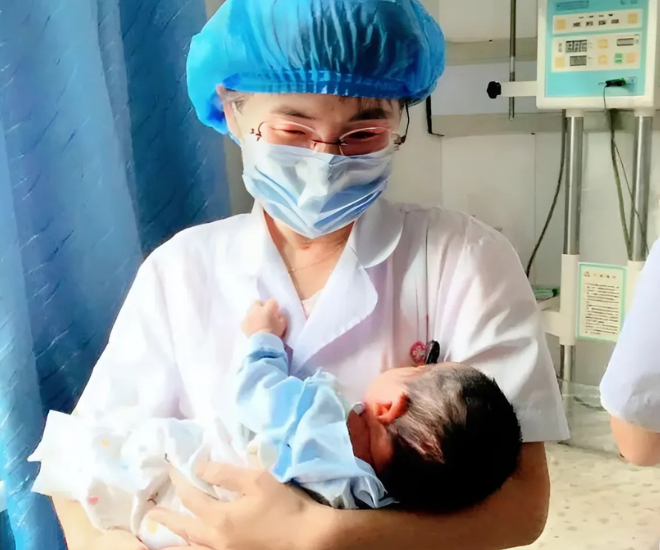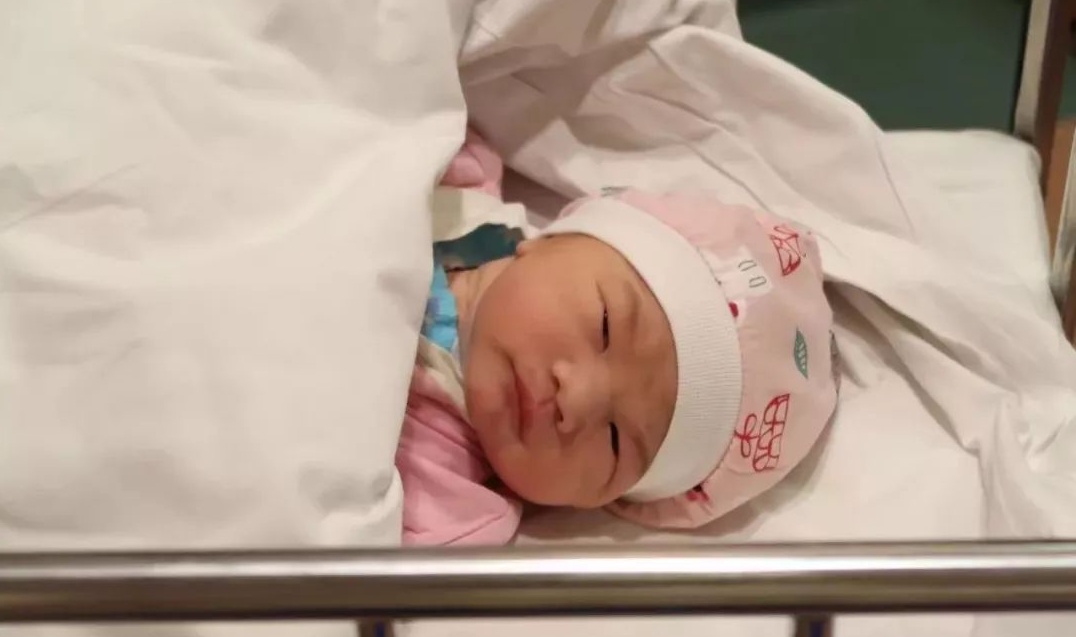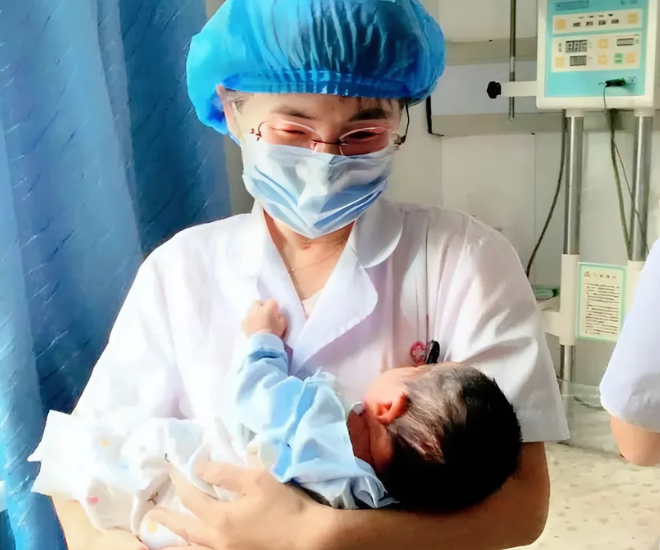This story centers around a young couple, Huynh and Linh, who had been eagerly awaiting pregnancy for years. Unfortunately, Huynh’s first pregnancy ended in a miscarriage when she was just over three months pregnant. So, when they found out they were expecting again, they were overjoyed and spared no expense in choosing an expensive hospital for the best prenatal care.
After a peaceful nine months and ten days, the due date finally arrived. Both families were present at the hospital, eagerly awaiting the good news. At 1 a.m., the doctor announced: “Huynh has given birth to a healthy baby boy.” The families were ecstatic, and the atmosphere outside the delivery room buzzed with excitement.

The families were overjoyed at the news of the successful delivery.
However, due to health reasons, the baby was taken to a special care unit instead of being immediately reunited with the mother. It was only after seven hours that the hospital handed the baby over to the family. But as Huynh held her baby for the first time, she was suddenly confused: “Why is my baby a girl?”
At first, everyone thought they were seeing things, but upon closer inspection, they began to wonder if the hospital had indeed mixed up the babies. Huynh and her husband were bewildered, and their families were in a panic, not knowing what to do.
The hospital immediately stepped in to explain: “It is impossible that we mixed up the babies, as Huynh was the only woman who gave birth this morning.” After investigating, they discovered a rare mistake: The midwife who recorded the baby’s information had mistakenly noted the wrong gender, and the nurse who informed the family had failed to double-check.

The families were bewildered after the baby was brought to the room.
Despite the hospital’s explanation, the couple remained anxious. How could they be completely reassured that their son had turned into a daughter in just a few hours? To ease their worries, they decided to take a DNA test immediately.
The wait for the DNA test results felt like an eternity, and everyone was nervous. Finally, when they received the confirmation that the adorable baby girl was indeed their biological child, they were overjoyed. As for Huynh and her husband, after the initial shock, they felt relieved to know that their baby was theirs, even if the “twist” had been a bit dramatic.
Recalling this unique experience, Huynh laughed: “The baby’s gender doesn’t matter as long as she’s healthy. But this mix-up certainly gave us a scare.”
Although it is now extremely rare for babies to be mixed up in hospitals, it is always good to be prepared. If you notice any irregularities, don’t hesitate to inquire with the hospital to ensure your rights. Pay close attention to the baby’s identification bracelet, cross-check the information, and take pictures if necessary. Don’t wait until something goes wrong to start worrying.
How to prevent mix-ups of newborns in the hospital?
While it is a rare occurrence, the mix-up of newborns in hospitals is a valid concern. To ensure that mothers receive their correct babies from the very first moment, modern hospitals have strict identification procedures in place. However, it is also important for expectant mothers and their families to take proactive measures to avoid any potential risks.
When a baby is born, the hospital will place an identification bracelet on the baby’s wrist or ankle. The mother will also receive a matching bracelet to ensure proper identification.
What to check?
– Mother’s name: The bracelet should display the mother’s full name accurately.
– Medical record number: This number should match the information in the mother’s hospital records.
– Date and time of birth: Cross-check these details to prevent any discrepancies.
– Baby’s gender: Verify that it matches the information from the prenatal ultrasounds.
What should mothers do?
– Take a picture of the baby’s identification bracelet as soon as you meet your baby for the first time.
– Check the bracelet at least 2-3 times a day, especially when the nurse takes the baby for a bath or a health check.
– If the bracelet becomes loose, is missing, or has incorrect information, notify the doctor or nurse on duty immediately.
Video source: Health & Life




































